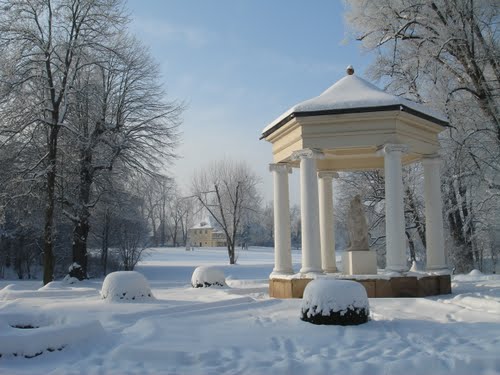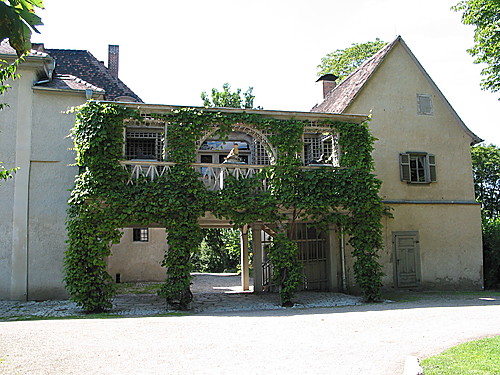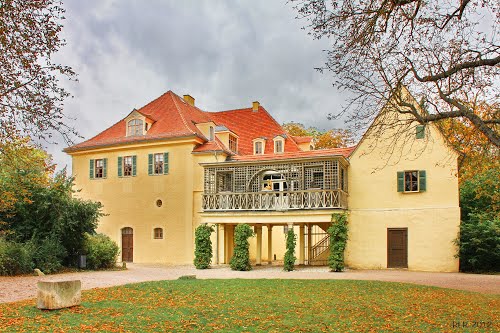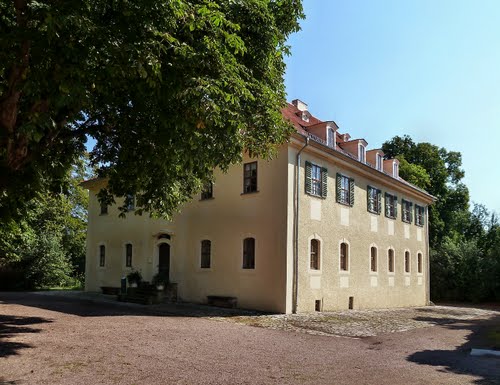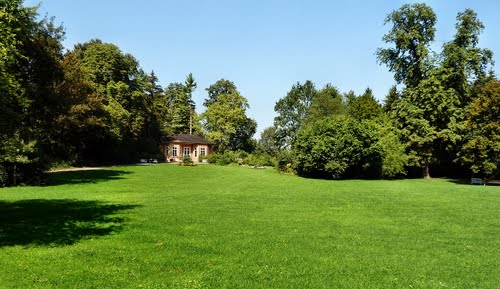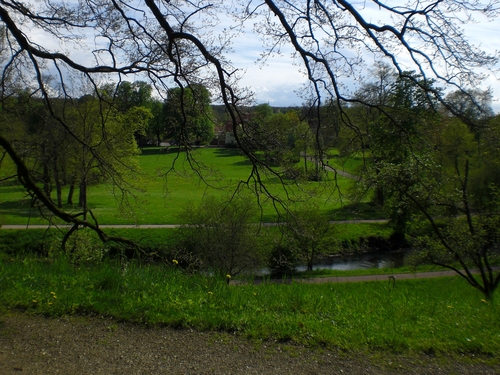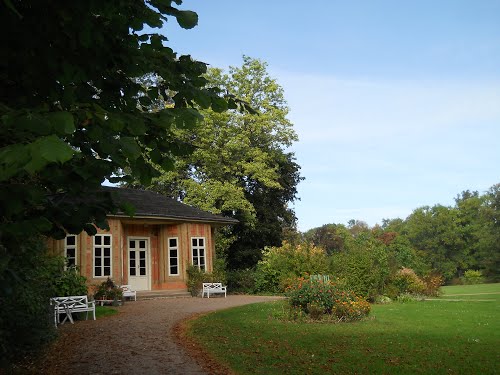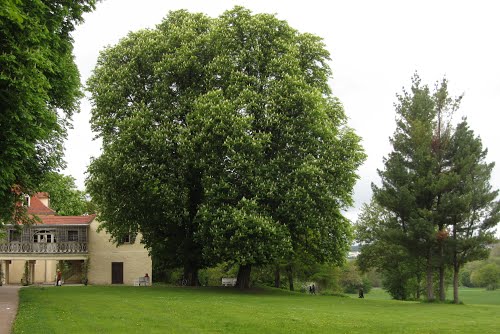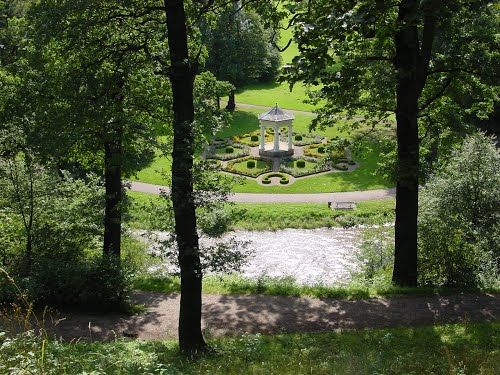Built in 1765 as a tenement house for a grand ducal demesne, the building served from 1776 as the residence of Prince Friedrich Ferdinand Constantin, the younger brother of the reigning Duke Carl August of Saxe-Weimar-Eisenach.
After the expansion of the tenement house to a country mansion, he and his tutor Karl Ludwig von Knebel designed a landscaped park in English style. Meandering paths were laid together with the first park architecture and seating, and various types of plants were cultivated. After Constantin’s departure to Weimar in 1781, Duchess Anna Amalia moved her summer residence to Tiefurt and continued to develop the park step by step. These developments included the Leopold memorial, the cenotaph for Constantin who died young, the Mozart memorial, the Herder stone, the Temple of Muses and the Tea Salon. During this time, Tiefurt became a social centre for the court of Weimar and their guests. A convivial social life developed featuring recitals, literary evenings and even a small newspaper, the Journal of Tiefurt. However, Tiefurt fell silent when the mansion was plundered by French troops in 1806 and on Anna Amalia’s death in 1807. Tiefurt was restored to its former glory only with the extensive renovation and redesign of the park between 1846 and 1850 carried out by the Weimar court gardener Eduard Petzold. Many of the copses which define the park landscape were planted in this period.
Tiefurt Mansion and Park were listed as a UNESCO World Heritage Site in 1998.

